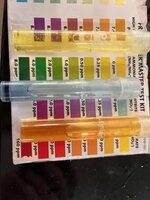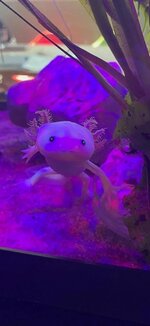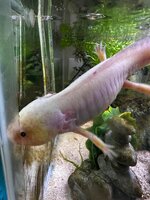Kc0olm
Member
Last July, I noticed that most of my 2-year-ol axo's gill stalk ferns (is that the term?) just went away. I've posted in various places, and the answers are a little vague, but most point to a water quality issue (although there are a range of speculations - I thought this would be a well-documented thing...).
I can imagine that around July last year, we took a longer vacation, and our axo went to a "water hotel" - I trusted and knew the owners well. I don't think it was the hotel, but my tank sort of crashed a little, and it took me some time to get it back. Anyway, photos show that something happened that month.
But live in the present!. Tank is doing well, axo is happy and eating worms! But now I am looking into solutions to grown back the ferns:
1) Almond leaves
2) Tea baths
Could the group comment on either of these, or provide other solutions?
Thank you!
I can imagine that around July last year, we took a longer vacation, and our axo went to a "water hotel" - I trusted and knew the owners well. I don't think it was the hotel, but my tank sort of crashed a little, and it took me some time to get it back. Anyway, photos show that something happened that month.
But live in the present!. Tank is doing well, axo is happy and eating worms! But now I am looking into solutions to grown back the ferns:
1) Almond leaves
2) Tea baths
Could the group comment on either of these, or provide other solutions?
Thank you!



